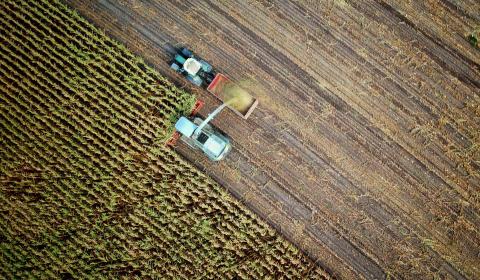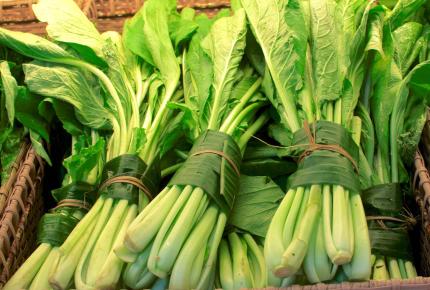
Why food production is emerging as a top sustainability issue
With the global population set to reach nearly 10 billion by 2050,[1] the question of how to feed billions of people sustainably is becoming increasingly critical. Crop, livestock and fish farmers around the world are working to strike a responsible balance between meeting growing global demand, and protecting the environment.
Regulators and consumers, too, are encouraging food producers to strive for more sustainable farming practices. For example, the European Commission’s recently released Farm to Fork strategy – a cornerstone of the European Green Deal – focuses in particular on food production. It sets ambitious sustainability guidelines for agricultural players with a view to reducing the industry’s environmental impacts.
Measuring and monitoring key to lowering GHG emissions
Agriculture accounts for a significant – and growing – share of global GHG emissions.[2]Crop production, animal husbandry and aquaculture emit roughly 10 billion tons of greenhouse gases each year, a figure that has nearly doubled over the past 50 years.[3]These emissions, mostly in the form of methane and nitrous oxide, come from a variety of sources. Some of the major contributors are livestock digestive processes, manure, rice cultivation, on-farm energy use and fertilizer production.
There are a variety of ways that food producers can reduce agricultural GHG emissions. Reducing energy use, and diversifying energy sources (for example by installing renewables on-site) is an obvious place to start. The circular bio-based economy also offers interesting potential. Farmers can invest in anaerobic digesters that generate biogas from agriculture waste and residues such as manure. Advanced bio-refineries can produce bio-fertilisers and protein feed.
As part of a move towards a circular economy model, some nutrition and chemicals companies are developing innovative animal feeds that reduce methane emissions from livestock. Part of the EU’s Farm to Fork strategy emphasizes the need for facilitating access to market for these new feed additives.
Most strategies to reduce emissions follow the age-old business adage – if you can’t measure it, you can’t improve it. In the context of environmental sustainability, this means measuring and monitoring emissions in order to set targets and improve performance over time.
The role of land management in combating climate change
Managing climate impact starts with land use. The impact of clearing forests for livestock or agricultural production is threefold. When forests are cleared or burnt, they release the carbon they store. Removing trees also diminishes an important carbon “sink” that takes up CO2 from the atmosphere. And the agricultural activity that replaces forest is frequently carbon-intensive.
For this reason, many producers of primary food products are seeking to demonstrate sustainable practices via certifications from organizations such as the Roundtable on Sustainable Palm Oil (RSPO) and UTZ / Rainforest Alliance (for coffee, cocoa, tea and hazelnuts).
Tackling pollution and resource management
The agriculture sector is also the largest source of fine particulate air pollution in much of the developed world.[4] The ammonia fumes from nitrogen-rich fertilizers, animal waste and the burning of excess crops combine with other airborne pollutants – mainly nitrogen oxides and sulfates produced by (conventional) vehicles, power plants and industrial processes. Exposure to the resultant toxic aerosols is hazardous to the health of humans and animals. Ammonia from agriculture also acidifies lakes and rivers, and, alongside pesticides, damage aquatic life and ecosystems.
For this reason, both companies and regulators are seeking a reduction in harmful fertilizer and pesticide use. The EU is aiming to reduce the use and risk of chemical pesticides and the use of more hazardous pesticides by 50% by 2030.[5] Producers that choose to use more environmentally-friendly fertilizers and pesticides, or make the switch to organic farming, will benefit from support. Their efforts are also likely to be rewarded by consumers, who pay increasing attention to the chemical content of the food they consume.
Resource use is also rising up the agenda. The agriculture industry uses more water than all others combined, accounting for nearly 70% of global freshwater withdrawal.[6] This is perhaps not surprising given the scale of production. However, to meet the needs of the world’s growing population, agricultural production will need to double over the next three decades. Sustainable water management will be crucial in ensuring food security.
Cultivating sustainable food production with a “circular” approach
To reduce their environmental footprint and achieve more sustainable agricultural practices, many players across the agriculture industry are looking to implement circular economy principles. When it comes to agriculture, the circular economy approach entails recycling agricultural waste and resources back into the production process as much as possible, powering farms with renewable energy, and using water efficiently.
Bureau Veritas offers a wide range of services help food producers make the transition to a more circular, sustainable business model. These include GHG emissions verification, and management system auditing and certification or training to standards like ISO 14001 (Environmental Management System), ISO 24526 (Water Efficiency Management System), AWS (Alliance for Water Stewardship), ISO 50001 (Energy Management System) and SA8000 (Social Accountability standard), as well as SMETA (Sedex Members Ethical Trade Audit) audits. Bureau Veritas also offers a range of food sustainability-related product certification (e.g. Organic, MSC, ASC, RSPO).
Learn more about Bureau Veritas’ certification and training services for the food industry, and Circular+, Bureau Veritas’ comprehensive suite of sustainability services.
[1] https://www.research.ox.ac.uk/Article/2019-10-28-how-do-you-feed-a-global-population-set-to-reach-10-billion
[2] https://www.mckinsey.com/industries/agriculture/our-insights/agriculture-plays-a-critical-role-in-limiting-the-impact-of-climate-change
[3] https://news.un.org/en/story/2014/04/466012
[4] https://news.agu.org/press-release/farms-a-major-source-of-air-pollution-study-finds/
[5] https://ec.europa.eu/info/strategy/priorities-2019-2024/european-green-deal/actions-being-taken-eu/farm-fork_en

